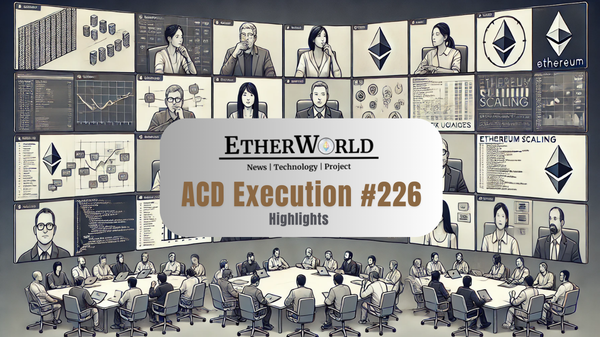Ethereum’s core developers have confirmed the headliner EIPs for the upcoming Glamsterdam network upgrade, setting clear technical priorities for the post-Fusaka phase. During ACDE Call #218, Enshrined Proposer-Builder Separation (ePBS, EIP-7732) was chosen as the consensus-layer headliner, and Block-Level Access Lists (BAL, EIP-7928) was confirmed as the execution-layer headliner.
- Why Headliners Matter
- Consensus-Layer Headliner: ePBS (EIP-7732)
- Execution-Layer Headliner: BAL (EIP-7928)
Why Headliners Matter
In Ethereum’s network upgrade planning, “headliners” are the primary EIPs around which the entire upgrade scope is built. They dictate development priorities, ensuring engineering teams and researchers focus resources on delivering and testing these critical changes before additional proposals are considered.
This approach minimises scope creep and reduces the risk of delays. For Glamsterdam, ePBS and BAL will serve as the foundational features, with all other proposals evaluated only after these two are stable and interoperable.
Consensus-Layer Headliner: ePBS (EIP-7732)
Enshrined Proposer-Builder Separation (ePBS) is a protocol-level change that separates the roles of block proposers and block builders. This aims to formalise builder markets, improve MEV (Maximal Extractable Value) fairness, and reduce centralisation risks for validators.
By embedding PBS logic directly into the consensus layer, Ethereum will ensure a more transparent and secure block production process. The change is expected to reshape validator operations and requires deep coordination between execution and consensus client teams to ensure a smooth rollout.
Execution-Layer Headliner: BAL (EIP-7928)
Block-Level Access Lists (BAL) make all read and write state accesses explicit at the block level. This feature enhances auditability, enables future transaction parallelisation, and improves analysis capabilities for developers and researchers.
Developers agreed to keep read operations (such as SLOAD, balance checks, and static calls) in the access list, despite the ~50 KB increase per block, due to their high value for audit and optimisation purposes. BAL will use RLP encoding initially for compatibility, with the possibility of moving to SSZ once tooling matures.
Conclusion
By finalising ePBS and BAL as the Glamsterdam headliners, Ethereum’s development community has established a focused upgrade strategy that prioritises stability, interoperability, and core protocol improvements. This clarity gives client teams and testing groups a strong foundation for planning and ensures the Glamsterdam upgrade can meet both its performance and security goals.
If you find any issues in this blog or notice any missing information, please feel free to reach out at yash@etherworld.co for clarifications or updates.
Related Articles
Disclaimer: The information contained in this website is for general informational purposes only. The content provided on this website, including articles, blog posts, opinions, & analysis related to blockchain technology & cryptocurrencies, is not intended as financial or investment advice. The website & its content should not be relied upon for making financial decisions. Read full disclaimer & privacy policy.
For Press Releases, project updates & guest posts publishing with us, email contact@etherworld.co.
Subscribe to EtherWorld YouTube channel for ELI5 content.
Share if you like the content. Donate at avarch.eth.
You've something to share with the blockchain community, join us on Discord!








